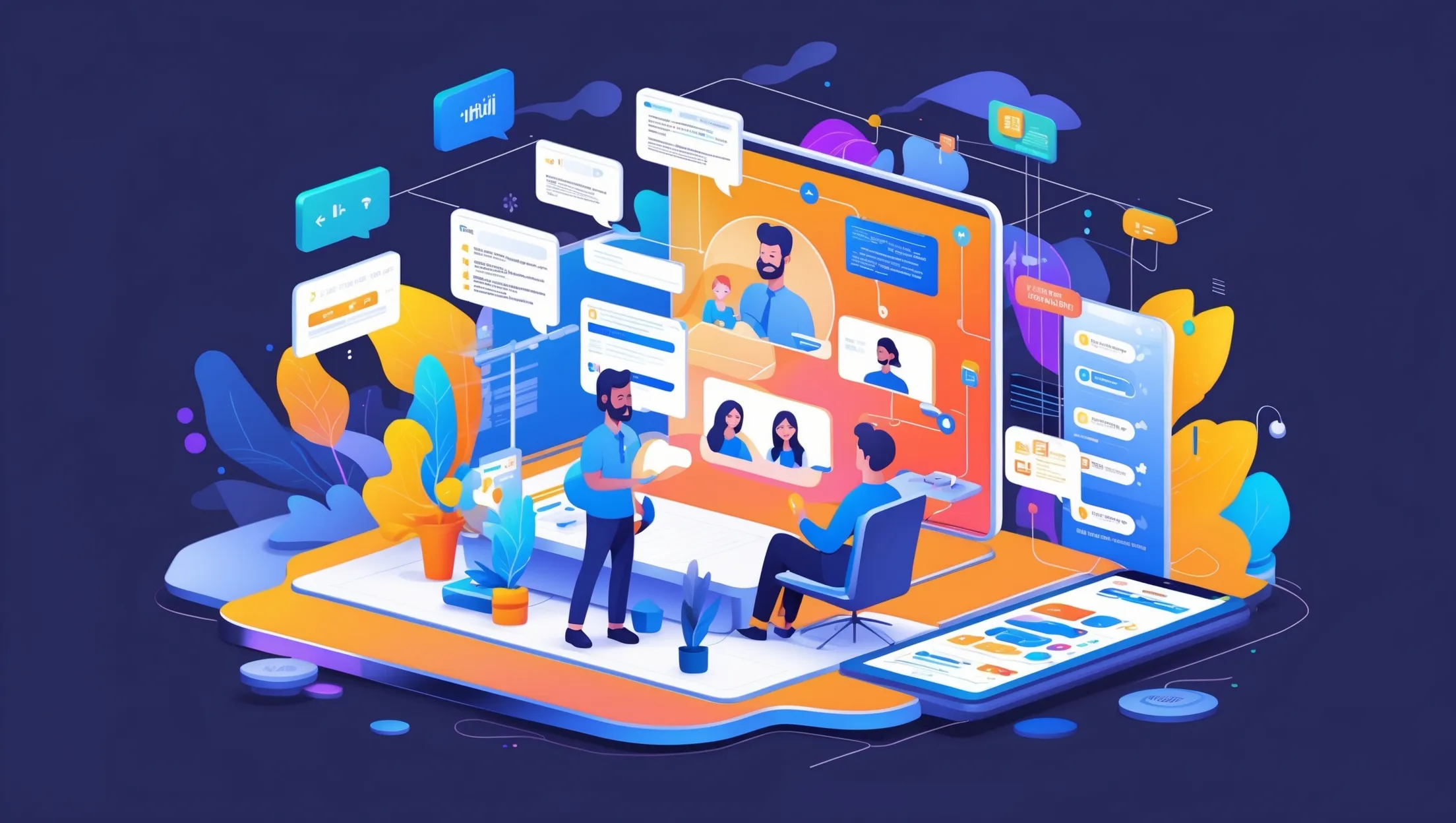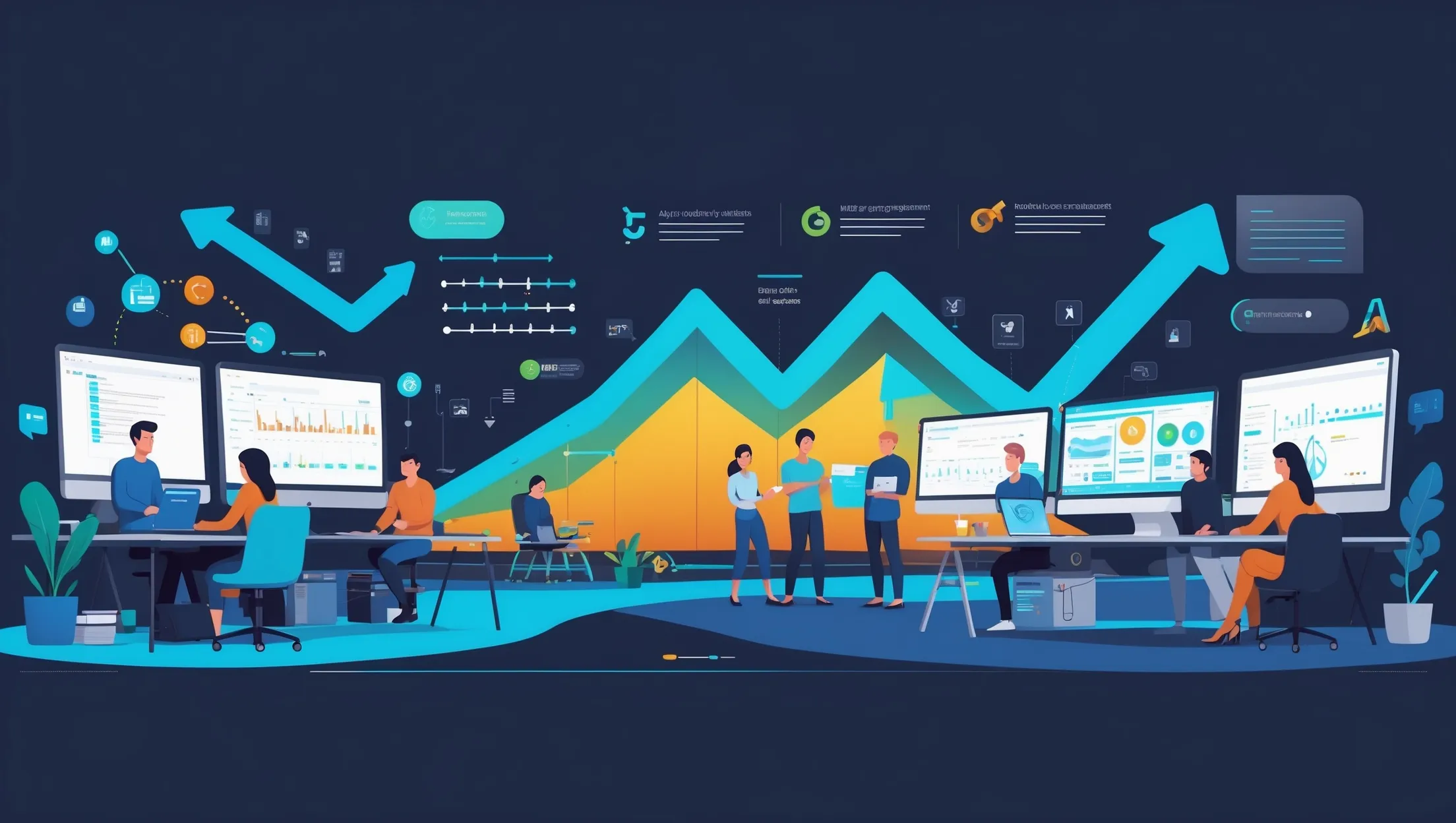
Remote hiring for technical roles: avoiding the interview charade
Remote technical hiring is broken. Most companies copy in-person interview processes that don't work remotely, leading to poor hires and lost talent. Here's how to build remote hiring that actually identifies great engineers and creates positive candidate experiences.
“Can you code on this whiteboard during our video call?”
This question perfectly captures everything wrong with remote technical hiring. I watch companies struggle with remote interviews, trying to squeeze traditional in-person processes through video conferencing software, wondering why they’re consistently hiring the wrong people or losing great candidates.
The problem isn’t the technology. It’s that most remote hiring processes test for in-person skills rather than remote work capabilities. They optimize for performance anxiety rather than actual job performance.
After helping over 50 companies build successful remote engineering teams, I’ve learned that great remote hiring requires fundamentally different approaches than in-person hiring. The best remote engineers aren’t necessarily the ones who can solve algorithm problems on a tiny shared screen while being watched by five interviewers. They’re the ones who can communicate clearly in writing, work independently without constant oversight, and collaborate effectively across time zones.
But most companies haven’t adapted their interview processes to identify these skills. They’re still using interview frameworks designed for office environments, wondering why their remote hires struggle with the actual demands of remote work.
In this guide, I’ll share the systematic approach I use to help companies build remote hiring processes that actually identify great remote engineers while creating positive candidate experiences that attract top talent.
Why traditional technical interviews fail remotely
Before we build better remote hiring processes, let’s understand why copying in-person interviews to video calls creates such poor outcomes.
The artificial constraint problem
Traditional whiteboard coding: Requires candidates to solve problems on a shared screen while being watched by multiple interviewers in real-time.
Why this fails remotely:
- Tiny screen real estate makes coding nearly impossible
- Screen sharing latency creates frustrating delays
- Multiple observers create performance anxiety that doesn’t exist in actual remote work
- No access to documentation, Stack Overflow, or other resources that remote developers use daily
The disconnect: Remote developers spend their days working independently with full access to resources, documentation, and tools. Testing them in artificial constraints that never exist in real work tells you nothing about their actual job performance.
The communication skills gap
Traditional interview focus: Technical problem-solving under time pressure with minimal explanation requirements.
What remote work actually requires:
- Clear written communication for asynchronous collaboration
- Ability to explain technical concepts to non-technical stakeholders
- Documentation skills for knowledge sharing across time zones
- Thoughtful problem-solving rather than quick reactions
The result: Companies hire developers who can solve algorithms quickly but struggle with the communication and collaboration that makes remote teams successful.
The culture fit misconception
Traditional approach: Judge “culture fit” based on in-person chemistry and social interactions during office-style interviews.
Why this fails for remote roles:
- Remote work culture is fundamentally different from office culture
- Social chemistry in video calls doesn’t predict remote collaboration effectiveness
- Office-based culture indicators (like preferring in-person conversations) may actually predict poor remote performance
What matters instead: Self-direction, written communication skills, comfort with asynchronous work, and ability to build relationships without physical proximity.
Facing a leadership challenge right now?
Don't wait for the next fire to burn you out. In a 30-minute discovery call we'll map your blockers and outline next steps you can use immediately with your team.
The remote hiring framework that works
Here’s the systematic approach I use to help companies identify great remote engineers while creating positive candidate experiences:
Phase 1: async work sample assessment
Instead of: Algorithm coding under time pressure
Try this: Real work simulation with appropriate time and resources
Implementation:
- Give candidates a realistic project that mirrors actual work they’d do in the role
- Provide 48-72 hours to complete the work at their own pace
- Allow access to all resources they’d normally use (documentation, Stack Overflow, Google, etc.)
- Focus on practical skills rather than computer science theory
- Require documentation explaining their approach and decisions
Example project for a full-stack role: “Build a simple API for managing a library book catalog with the following features: add/remove books, search by title/author, track check-out status. Include basic tests and documentation explaining your design decisions. Use whatever technologies you’re most comfortable with.”
What this reveals:
- How they approach real problems without artificial time pressure
- Code quality and organization skills
- Testing and documentation practices
- Technology choices and justification
- Problem-solving methodology
Phase 2: technical discussion and collaboration
Instead of: Whiteboard problem-solving while being watched
Try this: Collaborative technical discussion about their work sample
Implementation:
- Review their work sample together in a pair programming style
- Ask them to explain design decisions and walk through their approach
- Discuss alternative approaches and trade-offs
- Simulate debugging by introducing a hypothetical issue
- Assess communication skills by having them explain technical concepts
Sample discussion framework:
- “Walk me through how you approached this problem”
- “What other approaches did you consider?”
- “How would you modify this if we needed to handle 10x the traffic?”
- “Let’s say users are reporting slow response times. How would you investigate?”
What this reveals:
- Technical depth and understanding
- Communication and explanation abilities
- Collaboration and feedback receptiveness
- Problem-solving thought process
- Ability to think systemically about trade-offs
Phase 3: async communication assessment
Instead of: Quick verbal Q&A sessions
Try this: Written communication simulation
Implementation:
- Send a complex technical scenario via email or Slack
- Ask for written analysis and recommendations within 24 hours
- Include stakeholder communication requirements (explaining technical decisions to non-technical team members)
- Follow up with clarifying questions to test async communication skills
Example scenario: “Our API response times have increased 40% over the past two weeks. Customer complaints are rising. You have access to basic monitoring data [provide sample charts]. Write a response that: 1) Analyzes potential causes, 2) Proposes investigation steps, 3) Suggests interim mitigation strategies, 4) Explains the situation to our customer success team in non-technical terms.”
What this reveals:
- Written communication clarity and organization
- Ability to break down complex problems
- Stakeholder communication skills
- Systematic thinking and prioritization
- Professional communication style
Phase 4: team collaboration simulation
Instead of: Panel interviews with multiple observers
Try this: Natural team interaction simulation
Implementation:
- Include candidate in actual team meetings (with their permission)
- Have them contribute to real technical discussions without pressure
- Observe interaction patterns rather than formal interview responses
- Focus on collaboration style and team dynamics
Alternative approach for sensitive environments:
- Simulate team meetings with realistic scenarios
- Include diverse team members in natural conversations
- Focus on how they ask questions and engage with others
- Assess cultural contribution rather than cultural fit
What this reveals:
- Natural collaboration and communication style
- How they engage with diverse perspectives
- Question-asking and learning orientation
- Team dynamics and interpersonal skills
Coaching for Tech Leads & CTOs
Ongoing 1:1 coaching for startup leaders who want accountability, proven frameworks, and a partner to help them succeed under pressure.
Adapting the process for different roles
Different technical roles require different remote skills. Here’s how to customize the hiring process:
For senior engineers and tech leads
Additional focus areas:
- Architecture and system design thinking
- Mentoring and knowledge sharing capabilities
- Cross-functional communication with product and business teams
- Technical decision-making and trade-off analysis
Specialized assessment approaches:
- Architecture discussion: Present a scaling challenge and discuss potential solutions
- Mentoring simulation: Have them explain a complex technical concept to a junior engineer
- Cross-functional scenario: Simulate explaining technical constraints to product managers
- Technical leadership exercise: Discuss how they’d approach technical debt or team productivity issues
For full-stack developers
Additional focus areas:
- Ability to work across different parts of the stack independently
- User experience awareness and product thinking
- Integration and API design skills
- Debugging across multiple technologies
Specialized assessment approaches:
- End-to-end feature development: Work sample that requires both frontend and backend work
- Integration challenge: Connecting multiple systems or third-party APIs
- User experience discussion: How they think about user needs and experience
- Technology choice justification: When to use different tools across the stack
For frontend specialists
Additional focus areas:
- User experience and design collaboration
- Cross-browser and responsive design considerations
- Performance optimization and accessibility
- Component design and reusability
Specialized assessment approaches:
- Design implementation: Given mockups, implement responsive components
- Performance optimization: Identify and fix performance issues in existing code
- Accessibility review: Assess and improve accessibility of existing interfaces
- Design collaboration: Simulate working with designers on interface improvements
For backend and infrastructure engineers
Additional focus areas:
- System reliability and monitoring
- Security and data protection considerations
- Performance optimization and scalability
- DevOps and deployment practices
Specialized assessment approaches:
- System design discussion: Design a system to handle specific scale and reliability requirements
- Debugging exercise: Investigate and resolve performance or reliability issues
- Security review: Identify and address security vulnerabilities
- Infrastructure as code: Demonstrate infrastructure automation and best practices
Building positive candidate experiences
Great remote hiring isn’t just about identifying the right people. It’s about creating experiences that attract top talent and reflect your company’s remote work culture.
Respect candidate time and autonomy
Flexible scheduling: Accommodate different time zones and work schedules rather than forcing candidates into your preferred meeting times.
Async-first communication: Use email and written communication for coordination, saving video calls for actual assessment conversations.
Realistic time expectations: Give candidates appropriate time to complete work samples and assessments without rushing.
Clear process communication: Explain the entire hiring process upfront so candidates can plan accordingly.
Demonstrate your remote work culture
Show, don’t tell: Let candidates experience how your team actually works remotely rather than just describing your culture.
Transparent communication: Share realistic information about remote work challenges and how your team addresses them.
Tool and process demonstration: Show candidates the tools and workflows they’d actually use in the role.
Team member access: Give candidates opportunities to speak with potential teammates informally.
Provide meaningful feedback
Detailed work sample feedback: Give specific feedback on work samples regardless of hiring decisions.
Process transparency: Explain decision criteria and how candidates performed against them.
Growth-oriented feedback: Help candidates understand what skills to develop for future remote roles.
Respectful rejection communication: Provide honest, helpful feedback even when not moving forward.
Common remote hiring mistakes and how to avoid them
After helping dozens of companies improve their remote hiring, I’ve seen the same mistakes repeatedly:
Mistake #1: copying in-person processes to video
What it looks like: Traditional whiteboard coding, panel interviews, and office-style culture assessments conducted over video.
Why it fails: Creates artificial constraints that don’t reflect actual remote work and favors people who interview well over people who work well.
Better approach: Design assessments that simulate actual remote work rather than adapting office-based processes.
Mistake #2: ignoring communication skills
What it looks like: Focusing only on technical skills without assessing written communication, documentation, or async collaboration abilities.
Why it fails: Remote work requires strong communication skills. Technical ability without communication skills creates team dysfunction.
Better approach: Weight communication skills equally with technical skills for remote roles.
Mistake #3: time zone discrimination
What it looks like: Requiring specific time zone alignment or availability for roles that don’t actually need it.
Why it fails: Eliminates qualified candidates unnecessarily and doesn’t reflect actual remote work flexibility.
Better approach: Define actual collaboration requirements and assess accordingly, without unnecessary time zone restrictions.
Mistake #4: overemphasizing video presence
What it looks like: Judging candidates based on video call presence, background, or equipment quality rather than work capabilities.
Why it fails: Video presence doesn’t predict remote work performance and can introduce bias based on personal circumstances.
Better approach: Focus on work quality and communication effectiveness rather than video presentation.
Mistake #5: rushing the process
What it looks like: Trying to complete remote hiring in the same timeframe as in-person hiring without accounting for async communication and work sample completion.
Why it fails: Rushed remote hiring leads to poor candidate experiences and incomplete assessments.
Better approach: Plan for longer but more thorough remote hiring processes that provide better outcomes.
Got a leadership question?
Share your toughest challenge and I might feature it in an upcoming episode. It's free, anonymous, and you'll get extra resources in return.
Measuring remote hiring success
Traditional hiring metrics don’t capture the unique aspects of remote hiring effectiveness. Here are the metrics that actually matter:
Candidate experience metrics
Time to complete assessment: How long your process takes from application to decision
- Target: 2-3 weeks for complete assessment
- Red flag: Processes taking longer than 4 weeks
Candidate satisfaction scores: Feedback on the hiring process experience
- Target: 80%+ positive feedback regardless of hiring outcome
- Measure: Post-process surveys for all candidates
Offer acceptance rate: Percentage of offers accepted by preferred candidates
- Target: 70%+ acceptance rate for top choice candidates
- Red flag: High rejection rate indicating process or offer issues
Hiring quality metrics
Remote work performance: How well new hires perform in remote environments
- Track: 90-day and 180-day performance reviews
- Compare: Performance against assessment predictions
Team integration speed: How quickly new hires become productive team members
- Target: Productive contribution within 30 days
- Measure: Manager and peer feedback on integration
Retention rates: How long remote hires stay with the company
- Target: 90%+ retention at 12 months
- Compare: Remote hire retention vs. overall retention
Process effectiveness metrics
Assessment accuracy: How well assessments predict actual job performance
- Track: Correlation between assessment scores and performance reviews
- Improve: Adjust assessment criteria based on performance outcomes
Time to productivity: How quickly new remote hires become fully productive
- Target: Full productivity within 60-90 days
- Factors: Onboarding quality, role clarity, team support
Diversity and inclusion: Representation across different backgrounds and locations
- Monitor: Geographic distribution, demographic representation
- Improve: Address bias in process and candidate sourcing
Scaling remote hiring across your organization
As your remote team grows, hiring processes need to scale while maintaining quality and consistency.
Building hiring team capabilities
Interviewer training for remote contexts:
- Train interviewers on effective remote assessment techniques
- Develop cultural competency for global candidate pools
- Create consistency in evaluation criteria and process execution
Structured evaluation processes:
- Standardized rubrics for different roles and levels
- Calibration sessions to ensure consistent evaluation standards
- Documentation requirements for all assessment decisions
Candidate pool expansion:
- Global sourcing strategies that reach diverse talent pools
- Partnership with remote-first recruiting organizations
- Referral programs optimized for remote networks
Technology and process optimization
Assessment automation:
- Automated work sample distribution and collection
- Integrated feedback and evaluation systems
- Candidate experience tracking and optimization
Collaborative evaluation tools:
- Shared evaluation platforms for distributed hiring teams
- Async feedback collection and discussion systems
- Decision-making workflows that work across time zones
Process continuous improvement:
- Regular assessment of hiring outcomes and candidate feedback
- A/B testing of different assessment approaches
- Data-driven optimization of process components
Conclusion: hiring remote engineers who actually succeed
Remote technical hiring isn’t just in-person hiring conducted over video. It requires fundamentally different approaches that assess the skills that actually matter for remote work success.
The framework I’ve shared helps you:
- Assess real remote work skills rather than artificial interview performance
- Create positive candidate experiences that attract top talent
- Build consistent processes that scale as your remote team grows
- Measure success using metrics that predict remote work performance
- Avoid common mistakes that lead to poor hires and lost talent
Your remote hiring implementation plan
Week 1-2: Assessment design
- Identify key skills needed for remote success in your specific roles
- Design work sample projects that simulate actual work
- Create evaluation rubrics that emphasize remote work capabilities
Month 1: Process testing
- Pilot new assessment approaches with a small number of candidates
- Gather feedback from both candidates and interviewers
- Refine processes based on initial results
Month 2-3: Team training and rollout
- Train hiring team on remote assessment techniques
- Implement new processes across all remote technical hiring
- Begin tracking candidate experience and hiring quality metrics
Months 4-6: Optimization and scaling
- Analyze hiring outcomes and candidate feedback
- Optimize processes based on data and results
- Scale successful approaches across the organization
Remember: The goal isn’t to replicate in-person hiring remotely. It’s to build hiring processes that identify people who will actually succeed in remote work environments.
Great remote engineers need different skills than great office engineers. They need strong written communication, self-direction, async collaboration abilities, and comfort with distributed teamwork. Your hiring process should assess these skills directly rather than hoping they correlate with traditional technical interview performance.
Focus on simulating actual remote work rather than testing artificial constraints. Give candidates opportunities to demonstrate the skills they’ll actually use in the role. And create hiring experiences that reflect the quality and thoughtfulness of your remote work culture.
The companies that master remote hiring don’t just fill positions faster. They build stronger, more diverse, more effective remote teams that outperform traditional office-based teams.
Facing a leadership challenge right now?
Don't wait for the next fire to burn you out. In a 30-minute discovery call we'll map your blockers and outline next steps you can use immediately with your team.
I’ve helped over 50 companies build effective remote technical hiring processes that identify great engineers while creating positive candidate experiences. If your team is struggling with remote hiring and wants to build systematic processes that actually work, let’s discuss how to implement this framework for your specific roles and culture.
📈 Join 2,000+ Tech Leaders
Get my weekly leadership insights delivered every Tuesday. Team scaling tactics, hiring frameworks, and real wins from the trenches.

